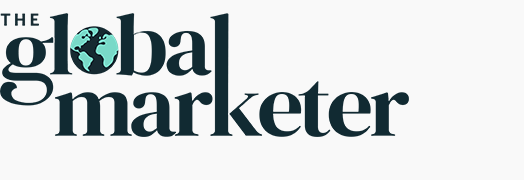Thanks to rapid advances in artificial intelligence (AI), machine learning (ML) and powerful language tools like GPT, translation tech isn’t just growing—it’s skyrocketing.
These advancements are changing how we communicate across languages, breaking down barriers in ways we’ve never seen. But with all this progress, there’s one big question on everyone’s mind: can AI ever replace human translators?
Let’s take a closer look at the future of translation technology.
Here’s our recap:
A quick glance into the future of translation technology
At VeraContent, we’ve seen firsthand how AI-powered translation tools are transforming the industry. Is AI a helpful tool or just plagiarism in disguise? As AI becomes more powerful and businesses increasingly operate in global markets, the demand for fast, accurate and cost-effective translations has never been higher.
The translation landscape is evolving, with AI at the center.
Today’s tools—such as Google Translate, DeepL and large language models (LLMs) like ChatGPT—are revolutionizing the translation process. They offer speed and contextual accuracy and can instantly process vast amounts of content. Plus, they can capture nuances in language that were previously challenging for machine translation systems.
“For translators, AI outputs are often more fluent than traditional machine translation, making them easier to refine. It’s not about replacing human translators, but enhancing their workflow.”
– Naomi Bleakley, Editorial, AI and Content Manager at VeraContent
Embracing AI translation tools to enhance your workflow is key. But while these tools have become more capable, it’s incredibly evident that they should be used as a complement to humans, not as a replacement. AI translation is beneficial for high-volume, straightforward content, but the creative, culturally nuanced aspects of translation that will reach a global audience require a human touch.
According to Georg Ell, CEO of Phrase, the next frontier in translation technology lies in the development of generative AI tools that integrate machine learning with human expertise. As Ell discussed in a recent podcast, generative AI can accelerate translation workflows while ensuring that translations remain human-centric, especially for complex, creative content.
AI translation tools: Current capabilities and limitations
AI or humans alike, translation is essential for businesses operating in global markets. According to research from CSA, “76% of consumers are more likely to purchase products or services if information is available in their native language.” Engaging audiences in their own language could be the difference between success and mediocrity.
AI-powered translation tools have made significant strides but are still not quite perfect. While AI tools have changed how we translate content, they still have limitations compared to human translators.
Let’s break down the current capabilities and limitations of translation tools:
Capabilities
- Speed and efficiency: AI translation tools can process text in a matter of seconds, making them ideal for real-time communication. Whether it’s translating customer inquiries or generating localized marketing materials, AI can handle large volumes of content quickly and efficiently.
- Contextual awareness: AI translation tools are increasingly better at understanding the context surrounding words. Instead of treating each word independently, modern AI can consider surrounding phrases, resulting in more accurate translations that feel natural in the target language.
- Scalability: AI tools can handle massive amounts of content, such as websites, social media posts and product descriptions, making them invaluable for global marketing efforts. The ability to rapidly translate content into multiple languages means businesses can scale their marketing campaigns internationally without the overhead of manually translating each piece.
- Cost-effectiveness: Compared to human translators, AI tools are relatively inexpensive, making them a cost-effective option for businesses that need to translate large amounts of content or don’t have the budget for extensive translation services.
Challenges
Despite these capabilities, AI translation tools still face several challenges:
- Cultural nuance and idioms: AI still struggles with cultural nuances, idiomatic expressions and regional slang. A phrase that works well in one language may not translate smoothly to another due to cultural differences or idiomatic meanings, which is why a human touch is highly valued.
- Accuracy in complex texts: AI translation tools aren’t well-versed in highly technical or specialized language. In fields like law, medicine or science, human translators are often required to ensure accurate and precise translations.
- Tone and emotion: Capturing tone, emotion and nuance—especially in creative content like marketing materials—is challenging for AI. The translation might be accurate at face-value, but it often fails to convey the intended emotional undertones or persuasive tone crucial for branding.
- Dependence on data: AI translation quality depends heavily on the data on which it has been trained. The translations may not be as reliable for less common languages or regions with fewer digital resources.
“AI doesn’t understand tone or nuance—it predicts words based on probabilities. That’s why capturing emotional undertones or cultural context still requires human expertise.”
– Naomi Bleakley, Editorial, AI and Content Manager at VeraContent

Practical applications for global marketers
AI translation tools are game-changers for global marketers, helping them scale their operations and connect with international audiences more effectively.
Here’s how your business can use AI for your marketing and localization strategies:
- Localization at scale: With AI, businesses can localize content for multiple markets quickly and efficiently. Clients in industries ranging from fashion to technology can use AI tools to localize everything from websites to product descriptions, ensuring each market gets tailored content that speaks to local preferences.
“Custom GPTs allow us to enforce style guides automatically, ensuring consistency across translations while maintaining each client’s unique voice.”
– Naomi Bleakley, Editorial, AI and Content Manager at VeraContent
- Social media marketing: Translation tools are transforming social media management for global brands, allowing marketers to instantly translate customer inquiries, comments and posts into different languages. This real-time interaction with followers worldwide gives businesses an edge. Incorporating AI is an excellent strategy for social media, but we also remain true to the human touch.
- SEO and content optimization: Localizing content goes beyond translation. To rank well in foreign search engines, marketers must optimize content for each region’s unique keywords and search behaviors. AI translation tools help streamline this process by automatically translating keywords, meta descriptions and titles, ensuring that content is linguistically accurate and optimized for search for each target market.
- Customer support: AI-driven chatbots and automated translation tools improve customer support by providing multilingual services. Brands can offer 24/7 support in multiple languages, improving customer satisfaction while reducing the need for large, multilingual support teams.
Integrating AI in marketing campaigns: VeraContent’s experience

At VeraContent, we’ve seen AI translation tools enhance the effectiveness of many marketing campaigns. To stay ahead of the curve, we launched an AI Task Force designed to test translation and other AI-driven tools used for our services.
Our team tested over 20 tools, including ChatGPT, Grammarly and Writer.com, to identify those aligned with our commitment to quality and consistency.
“When ChatGPT came onto the scene, it was like a leap forward. We knew we had to figure out how to use it responsibly because it was clear this was going to change things in our industry.”
– Shaheen Samavati, CEO of VeraContent
In one of our test projects, we tested HeyGen’s AI video translation and dubbing tool to assess its ability to capture tone, context, cultural relevance and lifelike dubbing. While the tool performed well in translating straightforward text, it lacked in many areas. The tool struggled with the subtleties of humor, regional dialects and the pacing required for effective video localization.
“AI translation tools can’t yet grasp tone or cultural subtleties. That’s why we see them as a helping hand rather than a replacement. They handle repetitive tasks, leaving human translators to focus on creativity and precision.”
– Naomi Bleakley, Editorial, AI and Content Manager at VeraContent
Looking forward, we’re exploring using custom GPTs to integrate client-specific style guides into the translation process. This approach would allow us to enforce tone and brand consistency across projects automatically, while human editors refine the outputs to ensure they meet VeraContent’s high standards.
Our experience has proven that the future of AI in marketing lies in finding the right balance. By blending AI’s efficiency with human creativity, we can deliver multilingual campaigns that are both scalable and culturally impactful.
What’s next for the future of translation?
The most effective translation solutions will blend AI’s speed and scalability with human expertise to maintain quality, creativity and cultural sensitivity. AI-driven translation tools have revolutionized the way businesses approach global marketing, enabling them to scale their operations across borders more efficiently and cost-effectively, but they still have a long way to go.
AI cannot fully replace human translators, especially regarding cultural nuances, tone and highly specialized content. The future will likely involve a hybrid approach, where AI handles the bulk of translation work, but human translators step in to add precision, creativity and cultural understanding. With the right mix of AI and human expertise, the future of translation technology looks bright.
If you want to manage multilingual social media accounts or find human translators with an eye for detail, don’t hesitate to contact our team.
Book a call to find out if you qualify for a Free Content Consultation.

